Best Portable Power Supply 2023
Battery-Powered Power Station Head To Head Testing
A 3000-watt portable power supply is a reliable work or home backup power source during a power disruption or outage. These generators can produce enough power to run appliances such as refrigerators, freezers, lights, computers, phones, and yes power tools!
Battery-powered power stations are a viable short-term alternative to gas generators delivering clean, quiet, portable power that is safe to use indoors.
In this Head to Head, we took a look at five portable power stations. Four of them run off of cordless power tool batteries and the fifth has an internal battery. We recognize that there are dozens of internal battery power stations available on the market. We chose one unit to compare but directed our focus to the power supplies geared to the power tool and outdoor power equipment industry.
Power Stations Tested In This Evaluation
Champion 1638-Wh Li-Ion Solar Generator Power Station
- Model – 100594
- Amps – 15
- Peak Wattage: 3200
- Running Wattage: 1600
- Weight: 41.00 lbs
- Battery: Internal 46.8V 35Ah
- Watt Hours – 1628
DEWALT – 1800 Watt Portable Power Station and Simultaneous Battery Charger
- Model – DCB1800B
- Amps – 15
- Peak Wattage: 3600
- Running Wattage: 1800
- Weight: 31.50 lbs
- Batteries: 60 Volt (4) 12.0 Ah
- Watt Hours: 960
EGO Power+ Nexus Portable Power Station
- Model – PST3042
- Amps – 15
- Peak Wattage: 3000
- Running Wattage: 2000
- Weight: 57.60 lbs
- Batteries: 56 Volt (4) 7.5Ah
- Watt Hours: 1680
Milwaukee CARRY-ON 3600with 1800W Power Supply
- Model – 2845-20
- Amps – 15
- Peak Wattage: 3600
- Running Wattage: 1800
- Weight: 42.40 lbs
- Batteries: (4) 18-volt 12.0 Ah
- Watt Hours: 864
Ryobi 40V – 40V 1800 WATT POWER STATION
- Model – RYi1802BTVNM
- Amps – 15
- Peak Wattage: 3000
- Running Wattage: 1600
- Weight: 29.70 lbs
- Batteries: 40 Volt (4) 6 Ah
- Watt Hours: 864
Best Portable Power Station Testing – 7 Scoring Criteria
We designed two performance tests to draw power from these power stations. Additional scoring categories included qualitative evaluations of ergonomics and features, size, and pricing. Lastly, we include a best-value category.
- Performance Test – Peak Power Test – Evaluated ripping an 8′ long 2×6 pressure-treated lumber, using a 15 Amp, 120V Corded Delta 10” table saw, at a constant feed rate.
- Performance Test – Run-time – Tested run-time using a 1500 Watt / 15 Amp space heater for power consumption.
- Ergonomics and Features – Many of these power stations are feature rich. We identified, evaluated, and ranked 13 distinct categories for each power station.
- Size and Weight – Size matters and weight can get cumbersome. We measured the dimensions and weight of each station as tested (with Batteries). Given that these are not hand tools, weight was not scored in the final rankings.
- Best Value – Oftentimes this category winner tends to resonate with most folks as it combines good performance and price.
- Price – Price is always an important factor in determining which power station is best for you. We’ve included the current pricing for each of the power stations and batteries “as-tested,” at the time of publication. We typically do not score pricing in our head-to-head but for this unique test, we determined a Cost per Watt Hour value and used that in our final scoring matrix.

Performance Test – Peak Power Test | Table Saw – DEWALT and Milwaukee
Most of these power stations are designed by tool companies and it is presumed that they can be used on a job site where power is unavailable or indoors where gas fumes from a generator are dangerous.
When considering using power tools with these portable power stations you need to make sure your unit can handle the surge of power the tools use when immediately turned on. This surge is called “Peak Power,” and it is the maximum power that the power supply can sustain for a limited period of time. Peak power differs from continuous power which refers to the amount of energy that the power supply can continuously supply. All power stations have a steady state power output rating as well as a higher rating for peak/startup power. This test is designed to stress the power station’s peak load capability.
In our testing, we evaluated these units by ripping a 2×6-8′ pressure-treated lumber, using a 15 Amp, 120V Corded Delta 10” table saw. One operator made the cuts at a consistent 2 to 3-second per-foot feed rate.
- The Champion boasts a 3200 Watt start-up rating however, this power station was unable to turn on the table saw without tripping an overload warning and forcing a reset of the power station.
- The Ryobi fared a bit better, capable of powering the saw through a slow feed rate but getting overloaded with a higher rate. The Power Station also experienced an overload on one of the startups of the saw.
- The EGO had no issues starting up the saw and supplying power through the slower feed rate. The Nexus did however encounter an overload condition during the higher feed rate passes.
- The DEWALT and Milwaukee performed the best and were able to supply the power needed to rip the wood even at the more aggressive feed rate with no overload conditions.
| Peak Power Test | |
| MFG | Score |
| DEWALT | 1 |
| Milwaukee | 1 |
| EGO | 3 |
| Ryobi | 4 |
| Champion | 5 |
Performance Test – Run-time Test | Heater – Champion
We performed a run-time test with a 120 Volt | 1500 watt electric space heater and an inline power meter and recorded how long the power stations could power the heater.
- The Champion came in at 49 minutes and the EGO at 45 minutes.
- DEWALT and Ryobi followed with 30 and 27 minutes respectively.
- Milwaukee was last with just under 25 minutes.
All of the portable power stations could power the heater at a steady state until the end. There were no gradual drop-offs in power.
The results of the run-time test closely correlate to the advertised Watt Hour (battery capacity or power over time) of each unit as tested. The Champion has slightly fewer watts Hours than the EGO but was able to power the unit longer. The other unexpected result is the Ryobi outperforming Milwaukee as they both had the same 864 Watt Hour capacity.
| Run-time Test Results | ||
| MFG | Time | Score |
| Champion | 48m59s | 1 |
| EGO | 45m7s | 2 |
| DEWALT | 29m56s | 3 |
| Ryobi | 26m59s | 4 |
| Milwaukee | 24m45s | 5 |
Ergonomics and Features – Winner Ryobi
Typically in our Head-to-Head evaluations “Ergonomics and Features” make up two of the final categories that are scored to determine the overall winner. We found that the power stations had such a disparity in features that could be important in your purchasing decision, that we have decided to not lump them together in the final scoring allowing each feature significantly more “weight” in the final scoring matrix. We discuss these features and rank each one below.
| Ergonomics and Features | |||||
| Ryobi | Champion | EGO | Milwaukee | DEWALT | |
| Carrying Ergonmics | 2 | 4 | 5 | 1 | 3 |
| Display Screen | 5 | 2 | 1 | 4 | 3 |
| Battery Life Indicator | 3 | 2 | 1 | 4 | 5 |
| Battery Flexibility | 1 | 5 | 1 | 3 | 3 |
| Pure Sine Wave | 2 | 1 | 2 | 2 | 5 |
| AC Outlets | 1 | 1 | 1 | 4 | 5 |
| USB Outlets | 1 | 2 | 4 | 3 | 5 |
| AdditionalPower Output | 2 | 1 | 2 | 2 | 2 |
| Station Charging Cord | 5 | 3 | 4 | 1 | 2 |
| LED Light | 1 | 2 | 3 | 3 | 3 |
| Parallel Kit | 1 | 1 | 3 | 3 | 3 |
| Passthrough Power | 2 | 1 | 2 | 2 | 2 |
| Bluetooth Connectivity | 1 | 3 | 1 | 3 | 3 |
| Security | 3 | 1 | 3 | 1 | 3 |
| TOTAL | 27 | 28 | 30 | 35 | 44 |

Carry Handles
The Champion has two, neutral grip handles located on top of the unit. While it is possible to carry this unit with one hand, most users will find it more comfortable using a two-handed carry.
DEWALT has two options for carrying. Option one is a neutral grip, two-handed carry, which DEWALT calls side handles. Option two is a one-handed, suitcase carry, which DEWALT calls the long front handle. When carrying as a suitcase option the back of the unit is smooth, with no protrusions, allowing it to slide against your legs and not catch your pants.
EGO has two neutral grip handles located on top of the unit, when carrying this unit two batteries face the user. We noted that when carrying the unit against your body, the batteries can easily be dislodged by body pressure. When we looked closer at this – the batteries slide into their ports and do not feature a locking mechanism. Because of this, the unit must stay in its upright position or risk batteries dislodging. While it is possible to carry this unit with one hand, most users will find it more comfortable using a two-handed carry.
Milwaukee has a roll cage with built-in handles for multiple carry options. It also has a padded shoulder strap [sold as an accessory] to help distribute the weight. We found this roll cage allows you to approach the power supply from ANY angle or position and be able to grip it with two hands. While it is possible to carry this unit with one hand, most users will find it more comfortable using a two-handed carry.
Ryobi features a top handle and two pairs of side handle that allow the user to approach and carry this unit from any direction and carry the unit in many configurations. It is also able to be carried one-handed, as a suitcase carry. Ryobi also has a padded shoulder strap [sold as an accessory] to help distribute the weight.
| Carrying Ergonomic Score | |
| MFG | Score |
| Milwaukee | 1 |
| Ryobi | 2 |
| DEWALT | 3 |
| Champion | 4 |
| EGO | 5 |
Display Screen
For status indicators, the Champion unit displays a battery fuel gauge indicator, as well as, a percentage number for battery life. Additionally, the display shows the status of its ports in use. This display does a time-out and requires the user to tap the power button to turn the LED display back on.
We noted that this display has the most information, but is a bit confusing and not intuitive – you WILL need to read the directions.
- DEWALT does not have a status or display screen. It has a green/red LED light at each battery port that indicates a hot battery, low battery charge, hot/cold condition, and charging and charged status.
- EGO has the best balance of being intuitive to operate and provides an easy-to-read and understandable display with useful information, such as; battery status indicators, runtime or charge time remaining, and a total output power meter.
- Milwaukee has a minimal display screen consisting of a very crude 25% increment overall power meter along with a warning indicator for overload and over-temperature conditions.
- The Ryobi display is easy to read but offers minimal information. It includes individual battery levels in 25% increments, and output load levels in both a fuel gauge display and percentage number display. [note – seemed duplicative] It has a session timer clock but could really benefit from a predictive runtime clock like the EGO and Champion displays.
| Display Screen Score | |
| MFG | Score |
| EGO | 1 |
| Champion | 2 |
| Ryobi | 3 |
| Milwaukee | 4 |
| DEWALT | 5 |
Battery Life Indicator
Champion, EGO, and Ryobi all have LCD displays indicating battery levels and load levels. The EGO also includes a large projected run-time/charge time, which impressed the team. DEWALT and Milwaukee do not have this feature.
| Battery Life Indicator | |
| MFG | Score |
| EGO | 1 |
| Champion | 2 |
| Ryobi | 3 |
| Milwaukee | 4 |
| DEWALT | 5 |
Battery Swap While Operating
The Champion has an internal battery and has the capability for parallel connections, allowing it to connect to, and stack up to 10 external batteries or an additional power supply.
The DEWALT and Milwaukee will NOT operate if one of their four batteries is removed. The folks at Milwaukee told us that the decision to do this was based mostly to make the portable power station cost-effective.
Both power stations will turn off if a single battery is disconnected or depleted. This is important to understand as all batteries are discharged at the same rate. So if a smaller battery is used amongst larger capacity batteries, the runtime will be limited by the smaller battery. For this reason, both units recommend using 4 identically sized batteries.
The EGO and Ryobi allow batteries to be swapped in or out without disrupting power. However, if the units are in a high-load demand operation, removing one of the batteries may force it into an overload condition. They will also operate on any combination or number of batteries.
| Battery Swap Score | |
| MFG | Score |
| EGO | 1 |
| Ryobi | 1 |
| DEWALT | 3 |
| Milwaukee | 3 |
| Champion | 5 |
Pure Sine Wave
Most of these power stations provide pure sine wave power. Pure sine wave inverters prevent overheating and damage to sensitive equipment by providing a more stable voltage and frequency output. Your neighborhood utility provider generates power using only sine waves.
The Champion, EGO, Milwaukee, and Ryobi provide pure sine wave power, but DEWALT does not. The DEWALT offers a modified sine wave type and is NOT recommended for delicate electronics.
The Champion also offers a THD Shield Feature. THD (Total Harmonic Distortion) Shield will protect sensitive electronics as the power station’s battery levels drop too low and a pure sine wave (<5% THD) cant be maintained, the power station will power down. This feature can be disabled if powering more robust devices, like the space heater in our run-time test.
| Pure Sine Wave Score | |
| MFG | Score |
| Champion | 1 |
| Ryobi | 2 |
| Milwaukee | 2 |
| EGO | 2 |
| DEWALT | 5 |
Number of AC outlets
We scored the power stations with the most AC outlets higher than the ones with fewer outlets.
- The Champion EGO and Ryobi all have 3 120-volt, 15-amp AC outlets.
- Milwaukee has two 120-volt, 15-amp AC outlets.
- DEWALT has one 120-volt, 15-amp AC outlet.
| AC Outlets Score | |
| MFG | Score |
| Champion | 1 |
| EGO | 1 |
| Ryobi | 1 |
| Milwaukee | 4 |
| DEWALT | 5 |
Number of USB outputs
We’ve all become slaves to charging small devices on the go like our phones and tablets. USB ports have become the standard for DC charging connections for most personal electronic devices. Having USB ports on these power stations is a must-have feature, but not all USB ports are created equally.
If you’re not familiar, USB A is the oldest standard rectangular connection that typically delivers just 5V at 2.1A of charging. These older connections are being slowly phased out in favor of the much smaller, ambidextrous USB C. Many USB C standards exist and the latest and greatest is the PD or Power Delivery which is capable of 60W fast charging with compatible PD electronics.
- The Champion was also impressive with 2 USB-A 2.1A Ports, 1 USB-C +PD (60W), and 1 USB C QC (Quick Charge 3.0 30W) port.
- The DEWALT does not have any USB ports, a huge miss in our opinion.
- The EGO has 4 USB ports but unfortunately, they are all just USB A, offering little flexibility.
- Milwaukee only has two USB ports, one USB-A and one USB-C +PD port.
- The Ryobi was the king of USB ports, boasting 4 USB-A 5V 2.1A and 2 USB-C +PD (Power Delivery 60W).
| USB Outlets Score | |
| MFG | Score |
| Ryobi | 1 |
| Champion | 2 |
| Milwaukee | 3 |
| EGO | 4 |
| DEWALT | 5 |
Additional Power Output
The Champion was unique in supplying additional DC power output options. The unit has a 12V DC, 10A automobile auxiliary power outlet as well as a 12V DC, 20A APP Anderson Power Pole connector.
| Addition Power Out Score | |
| MFG | Score |
| Champion | 1 |
| DEWALT | 2 |
| EGO | 2 |
| Milwaukee | 2 |
| Ryobi | 2 |
Charging Cord / Onboard storage
Can you imagine pulling your power station out in an emergency and the cord was missing?
- Champion supplies a 2-prong, C7 non-polarized connector power cord and plug, also known as a Figure-8 or shotgun connector. This charging cord is fairly common to replace if damaged or lost. The Champion does not have a cord wrap or onboard storage.
- DEWALT does not come with a charging cord but It can be powered by any standard extension cord, with a universal plug.
- EGO comes with a proprietary plug and attached inverter. The plug and inverter are both stored onboard, in a compartment on top of the unit. While we feel having a proprietary cord and inverter is a drawback, the onboard storage compartment is a plus. EGO also offers a solar panel charger block that can replace the AC block. This solar block is sold as an accessory for $169.
- Milwaukee comes with a 6-foot HD 14 gauge extension cord – a universal plug which we liked. If the cord gets lost or misplaced, any standard extension cord can charge the unit. Additionally, the roll cage at mid-height has an indentation that was designed to act as a cord-wrap storage feature.
- The Ryobi power cord is proprietary and has no onboard storage. A replacement cord will cost approximately $15 if you lose it.
The team favored the power stations that could be powered by a standard extension cord and plug, as well as, offered on-board cord storage.
Replacing Lost Cords
Champions cord, while not proprietary, could be tough to find a replacement for in an emergency. EGO and Ryobi’s proprietary cords would be even more difficult to replace in an emergency.

Solar Panel Charging
Solar panels and power stations are an interesting conversation. Having the ability to charge your power station with solar panels is a nice feature and one that many folks with RVs, camps, and off-grid concerns will find valuable. Contractors on the other hand have limited real estate on the job site space when you consider safety, material, and machine movement.
The Champion comes with an MC4 connector harness to connect up to 3 solar panels. The folks at Champion told us they currently do not offer solar panels as an accessory but recognize that users may want the off-grid charging capability
| Charging Cable Score | |
| MFG | Score |
| Milwaukee | 1 |
| DEWALT | 2 |
| Champion | 3 |
| EGO | 4 |
| Ryobi | 5 |
Built-in light
Only two of the power stations include a light which could be useful in dark areas or during power outage situations.
- Ryobi has a work light with 4 settings: high, low, and a solid or flashing red light for night vision use.
- The Champion has a work light on the front of the unit with a high/low option.
| Onboard Light Score | |
| MFG | Score |
| Ryobi | 1 |
| Champion | 2 |
| DEWALT | 3 |
| EGO | 3 |
| Milwaukee | 3 |
External Power Daisy Chain – Parallel Kit
All the tested power stations have a NEMA 5-15 receptacle which is the standard three-prong household outlet designed to deliver 15A continuous power. A common application for inverter generators is to power an RV, but most common RVs use a 30A plug. Luckily several of these power station manufacturers have that covered.
Ryobi sells a parallel connection cord as an accessory. It allows users to connect two inverter generators and get twice the power. This parallel kit works with all of Ryobi’s inverter generators and doubles your power output for heavier power needs. It comes as a 120-Volt RV/30 Amp 1RC outlet only.
The Champion has parallel connection capability to increase to 30 Amp power by connecting 2 power stations together or by connecting another ParaLINK-capable inverter to double the power station’s power and add a 120V 30A RV outlet and 120V 30A locking outlet. It also has the capability to stack up to 10 expansion batteries for a total of 18,018-Wh. Which when combined with solar charging might appeal to off-grid applications.
| Parallel Link Score | |
| MFG | Score |
| Champion | 1 |
| Ryobi | 1 |
| DEWALT | 3 |
| EGO | 3 |
| Milwaukee | 3 |
Pass-Through Power
Pass-Through Power is the capability of the unit to simultaneously charge the unit’s batteries while powering whatever is connected to its AC outlets. This feature is a common request for those that want to use the unit as a standby emergency generator for important power applications with intermittent or unreliable power sources. [i.e. sump pump, refrigeration, backup freeze protection]
The Champion was the only unit tested that has Pass Through Power. Another indicator of its targeted user base.
If you read the reviews on many of these power stations you will learn that many of them intentionally drain the batteries while not in use, but turned on.
Many of these power stations have a “drain down” due to the Quiescent current – which is a natural draw of the battery over time. Quiescent current only applies if the unit is left on because of the internal “background housekeeping,” and monitoring that these units require. Due to the lack of passthrough power, if you wanted to leave these units on in some sort of standby function, the batteries would drain over time.
| Passthrough Charging | |
| MFG | Score |
| Champion | 1 |
| DEWALT | 2 |
| EGO | 2 |
| Milwaukee | 2 |
| Ryobi | 2 |
Remote Control
Having the ability to remotely check on power levels and even turn off the unit is a nice feature that two units have through phone apps.
The Ryobi can be controlled through the Ryobi GenControl App. The App is a well-polished app that works with the majority of Ryobi’s generator lineup. Once the unit is powered on by hand, the app can be used to turn on and off the AC power plugs as well as remotely shut down the unit. The battery power levels can be checked as well as the output watts. Some additional features include controlling the onboard LED light as well as the LCD display.
The EGO is the only other unit that has remote connectivity. The EGO can be controlled by the EGO Power+ app and can be connected via Bluetooth and Wi-Fi. Having the wifi connectivity can allow you to monitor the unit from almost anywhere.
| Remote Control Score | |
| MFG | Score |
| EGO | 1 |
| Ryobi | 1 |
| Champion | 3 |
| DEWALT | 3 |
| Milwaukee | 3 |
Security features
While all of the power stations have handles that allow you to use a cable or chain to secure the power station to a stationary object all but two of them could have their expensive batteries removed and stolen. The Champion has an internal battery that automatically protects the battery from theft.
Milwaukee is the only unit that built into their design an anti-theft feature for the batteries. It has a rotating handle that slides over the batteries and exposes a padlock hole. Once the handle is over the batteries they are unable to be removed from the unit.
| Security Score | |
| MFG | Score |
| Champion | 1 |
| Milwaukee | 1 |
| DEWALT | 3 |
| EGO | 3 |
| Ryobi | 3 |
Size and Volume
The team felt that the space that these units take up is more important than the weight. We ranked the units based on calculated volume and list the weights as tested for your reference. We also calculated their cubic feet for scoring purposes.
The lightest power station was the Ryobi at 28 lbs, followed by the DEWALT at 32 lbs. Champion and Milwaukee were close in weight at 41 and 42 lbs respectively and the EGO was the heaviest at 58 lbs.
With regard to cubic feet, the Champion was the smallest unit at 1.048 cu. ft. The Milwaukee followed with 1.4 cu. ft. followed by the Ryobi with 1.5 cu. Ft. The EGO was the largest unit at 2.8 cu. Ft.
| Size and Weight | ||||||
| Weight (lbs) | Width (in) | Length (in) | Height (in) | Cubic Feet | Rank | |
| Champion | 41.00 | 13.750 | 10.750 | 12.250 | 1.048 | 1 |
| Milwaukee | 42.40 | 15.000 | 12.125 | 13.625 | 1.434 | 2 |
| Ryobi | 29.70 | 11.875 | 16.500 | 12.875 | 1.460 | 3 |
| DEWALT | 31.50 | 12.375 | 21.000 | 10.875 | 1.635 | 4 |
| EGO | 57.60 | 17.625 | 18.500 | 14.625 | 2.760 | 5 |
Charging Speed [time]
Note – All of these portable power stations, except the Champion, can double as a cordless battery charger.
The Champion can charge in 4.5 hours from AC wall power and 4.8 with solar-powered DC power. When connected to both AC plus DC charging can be as low as 2.5 hours. We liked that the Champions status screen tells you, based on real-time monitoring, how much time it will take to charge.
DEWALT takes 6 hours to charge four [4] 12.0 Ah batteries. Like its competitors, it has multi-port, parallel charging, which means it charges all four batteries at the same time, at a charging rate of 2 amps
The EGO takes 12 hours to charge its four [4] 7.5 Ah batteries
Milwaukee pulls 1000 watts from an AC outlet during charging. It takes 4 hours to charge 12 Ah batteries. It charges its batteries simultaneously at a 3 Amp rate [1000 watts]
The Milwaukee unit has simultaneous charging but also evaluates the batteries with the lowest charge and will prioritize charging that pack first. This is because if that pack is depleted the unit will not run. If all the packs are depleted to the same level the charger will simultaneously charge them all at the same rate.
Ryobi charges its batteries sequentially and takes 3 hours to charge one 6.0 Ah battery and 12 hours to charge all 4 batteries. The charger is 80 watts, which is a 2A charge rate for 40V batteries.
Best Price – Winner Ryobi
We scored the portable power station with the batteries we tested them with and included the battery cost.
The Ryobi was the least expensive with a tested price configuration of $1337. The power station can be sold as a kit with (2) 6.0Ah batteries for $899. Additional batteries are $219 a piece. The bare unit price is currently $749.
The Champion does not have external batteries and the unit cost is $1499.99
The Milwaukee is not sold as a kit and the unit cost is $699. The 12.0 Ah batteries tested each run $249 driving the as-tested cost to $1695.
The EGO was tested with (4) 7.5 Ah batteries. The Power Station can come as a kit with two 7.5Ah batteries for $999. The two additional batteries are $399 a piece, with an as-tested price of $1797.
The DEWALT like Milwaukee does not get sold as a kit and a bare unit will cost $529. The 12.0Ah batteries are each $319 costing a total of $1805
It’s important to remember that to operate the DEWALT and Milwaukee you will need ALL 4 batteries. The EGO and Ryobi do not require all of the batteries to operate.
| Pricing | |
| MFG | Price Tested |
| Ryobi | $1,337.00 |
| Champion | $1,499.99 |
| Milwaukee | $1,695.00 |
| EGO | $1,797.00 |
| DEWALT | $1,805.00 |
Price Per Watt Hour – Winner Champion
We stated earlier that the runtime test results closely correlated to the total Watt Hour rating of each power station. To aid in seeing how far your purchasing power is going to battery capacity and therefore, expected runtime, we calculated the Price per Watt Hour for each station and the batteries tested.
Again, the Champion took top honors in this ranking with a $.92 / Wh value. The most interesting result is that of the EGO station, which was just slightly higher at $1.07/Wh. The EGO had a much better bang for the buck result than the other 3 removable battery platform contenders.
The Ryobi finished in third place with a $.1.55 / Wh value. DEWALT finished at $1.88/Wh, and Milwaukee at $1.96/Wh. These two cost over double the Champion when just considering battery capacity.
| Price per Watt Hour | ||||
| Price as Tested | Watt Hour | Price/Watt Hour | Rank | |
| Champion | 1,499.99 | 1628 | $0.92 | 1 |
| EGO | 1,797.00 | 1680 | $1.07 | 2 |
| Ryobi | 1,337.00 | 864 | $1.55 | 3 |
| DEWALT | 1,805.00 | 960 | $1.88 | 4 |
| Milwaukee | 1,695.00 | 864 | $1.96 | 5 |
Best Power Station
Our usual modus operandi is to crown one winner as Best in Class winner. With this particular head-to-head, we quickly learned, that portable power supplies are designed to meet different and specific needs. We evaluated and scored four categories for you to consider:
- Best Emergency Portable Power Station
- Best Jobsite Power Station
- Best All Purpose Power station
- Best Value Power Station
| Total Score | |||||||
| Features And Ergo | Size | Pricing | Runtime | Jobsite Performance | Score | Rank | |
| Champion | 28 | 1 | 1 | 1 | 5 | 36 | 1 |
| Ryobi | 25 | 3 | 3 | 4 | 4 | 39 | 2 |
| EGO | 30 | 5 | 2 | 2 | 3 | 42 | 3 |
| Milwaukee | 35 | 2 | 5 | 5 | 1 | 48 | 4 |
| DEWALT | 46 | 4 | 4 | 3 | 1 | 58 | 5 |
Best Emergency Portable Power Station – Winner Champion
The Champion portable power station scored 36 points and was designed as a “ground up,” portable power station, and it clearly shows!
It crushed the other power stations in the features, price, and runtime testing categories.
The Champion is a compact, feature-packed portable backup battery solution ideal for RVing and camping, tailgating, or as an emergency indoor generator during a power outage. As good as it is, it is NOT suitable for job site use.
Best Jobsite Power Station – Milwaukee
The Milwaukee scored 48 points overall beating DEWALT with 56 points. The DEWALT and Milwaukee were clearly both designed to run power tools on the job site. They both crushed the table saw performance test.
The DEWALT lost place due to its featureless design. Milwaukee has more features than DEWALT but suffered in runtime due to its relatively lower total Watt Hour capacity.
“Milwaukee’s minimalist but robust design was meant to be dropped, kicked, and survive on the job site” ~ Jeff
Of the two power stations, Milwaukee is able to run with pure sine wave energy allowing tradespeople to run their electronics to view plans on job sites. The Milwaukee with four 12 Ah batteries will cost $1,695 while the DEWALT, in the same configuration, costs $1,805.
Best ALL PURPOSE Portable Power Station | Ryobi
This category is where we chose the winner based on all-around value and usefulness, not solely on score. Ryobi came in second place overall with 39 points. EGO was just one point behind with 42 points.
The Ryobi is very feature-rich, winning the Ergonomics and Features Combined Category. The 40V battery platform is a rapidly expanding exciting lineup from Ryobi and the power station is a great addition.
The Ryobi is the lightest of the stations and reasonably compact. The abundance and quality of the USB ports were a team favorite and lastly, the Ryobi can be paired up [parallel connected] with a gas or battery generator to double its power to 30 amps – something that will get RV users’ attention.
Best Value – Winner EGO
Best value is often a popular category as it highlights contestants that performed well at a lower purchase cost.
But the EGO was the second most expensive unit. While that may be true, its the Cost/Watt Hour conversation that really brings the EGO value to the front. The EGO boasted the highest Watt Hour rating with 1680WH, almost doubling that of the Ryobi and Milwaukee. The kit price of the EGO with two 7.5 AH batteries is just $999, and that brings its runtime capability just shy of the Milwaukee, Ryobi, and DEWALT for a significantly lower cost.
The EGO power station tells you how much time it takes to charge its display which is an awesome feature. The team liked that it allows for battery swap while operating and offers 2000 continuous watts / 3000 peak watts
The EGO was neck and neck in this testing with the Ryobi, finishing just one point behind with 42. Both were feature rich and clearly designed for non-job site user experience.
Buy Now From Our Sponsored Retailers
Other Options
Conclusion
These Power Stations and their batteries are expensive investments. Some of these units had great features but likely none are going to be able to sway you to a new battery platform if you already have batteries of a certain brand that could drastically reduce the purchase price of the systems. If you’re not already invested in a battery platform, you may want to look closer at stand-alone, internal battery platforms like the Champion.
These tests take time to complete and are ultimately limited in scope as we’re not a professional testing company.
We cannot do long-term testing that would shed light on durability and we can’t possibly test every application that you might use one of these power stations for.
We get lots of comments about how we make the final rankings. We’ve openly shared ALL the data from our tests, and you can rank the tools however you want. Hopefully, you’ll find this Head-To-Head useful when comparing compact portable power stations.
If you have a moment, please check out our other Head-to-Head Tests.
Portable Power Station Head To Head Test Video
About the author
2 Comments
Leave a comment
Disclosure
Product reviews on this site contain our opinion of a product or service. We will always strive for objectivity and transparency in our reviews. Our goal is to provide readers with honest, objective information based on our own experiences. We never have and never will accept payment in exchange for a positive review. Many of the products that we review are provided to us for free by a manufacturer or retailer. In some cases, we also have advertising or affiliate relationships with manufacturers and retailers of products and services we review. For additional information please visit our additional disclosure policies.














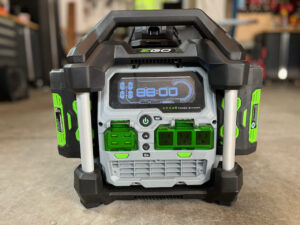


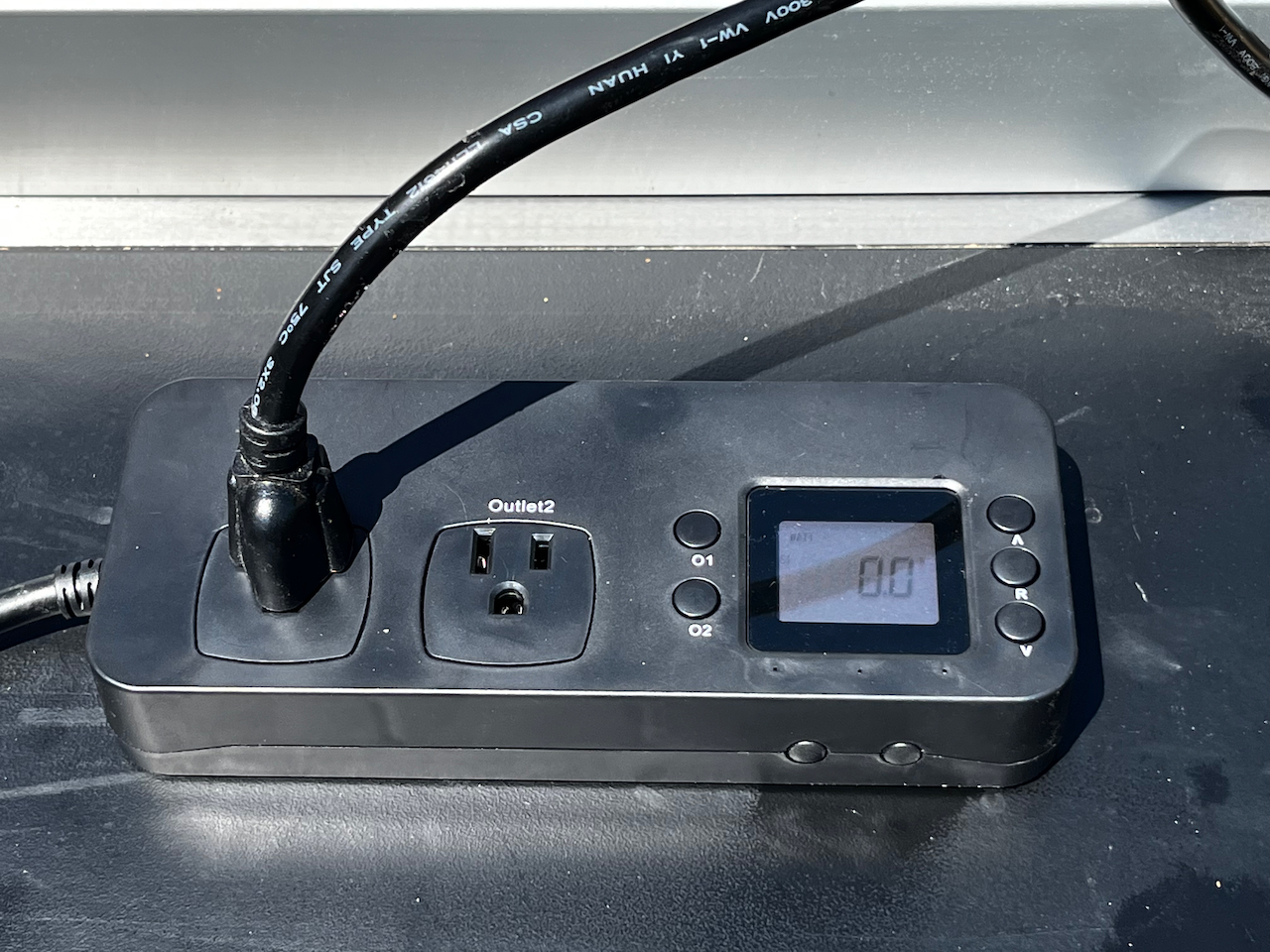





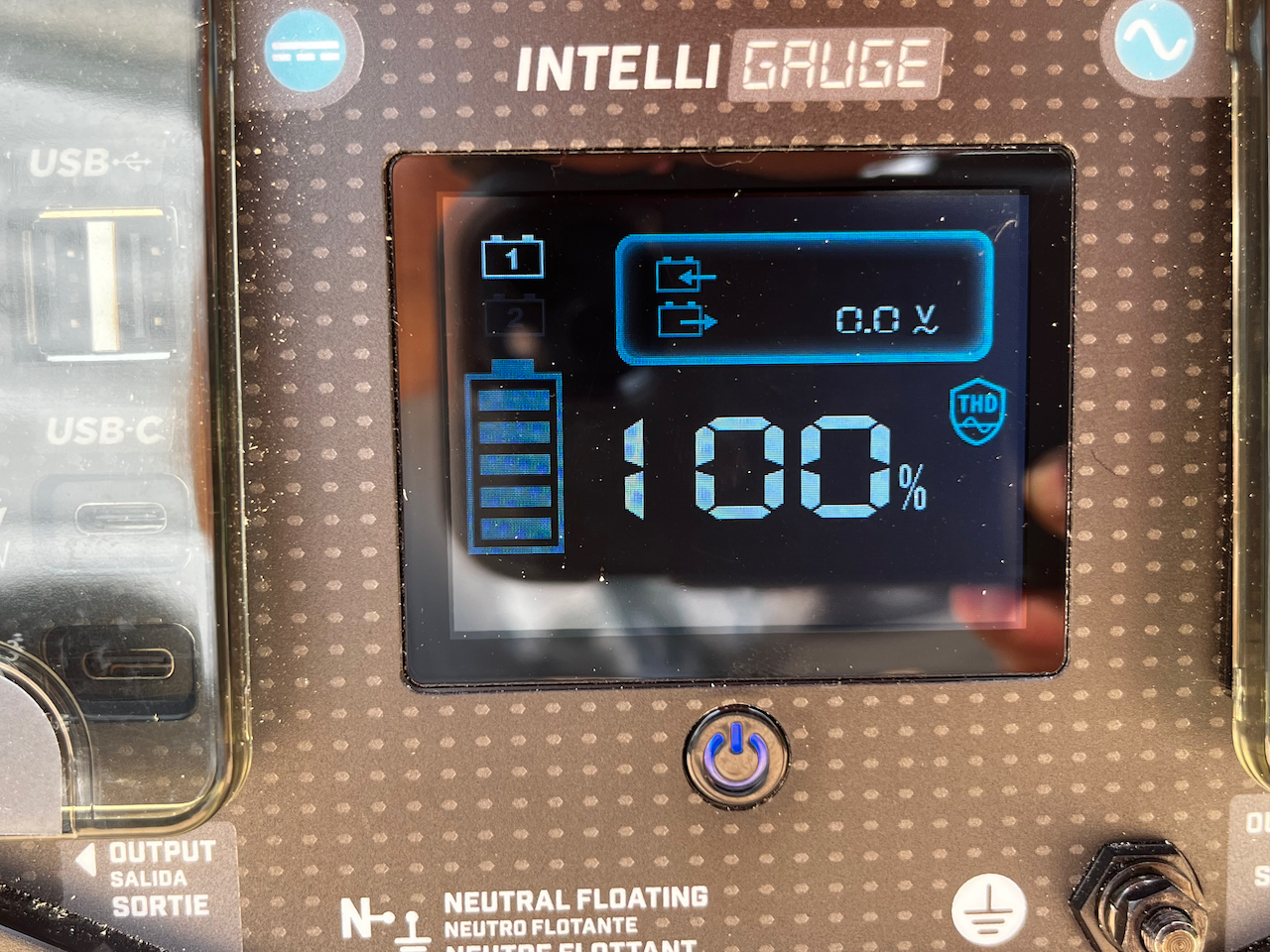







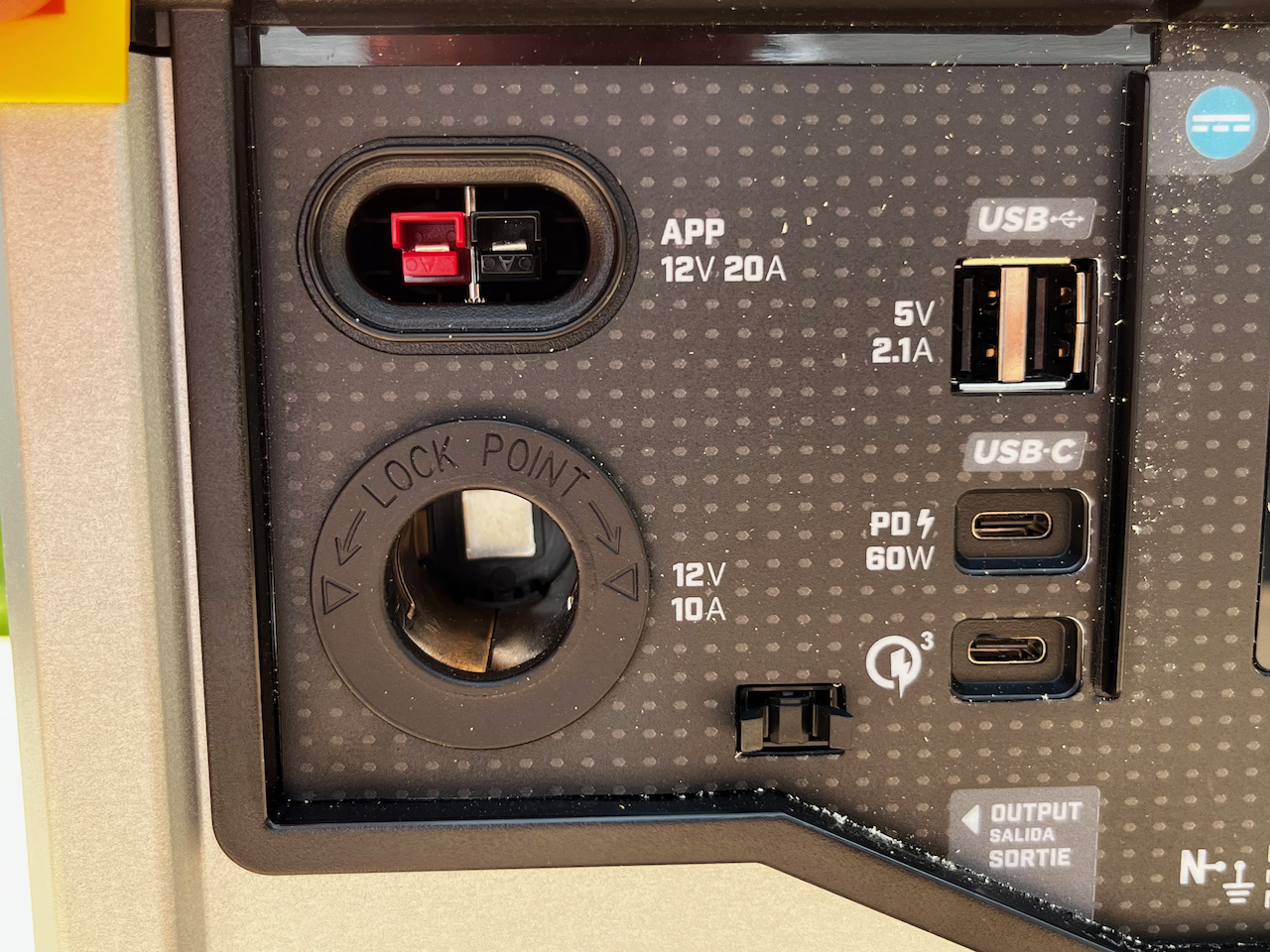
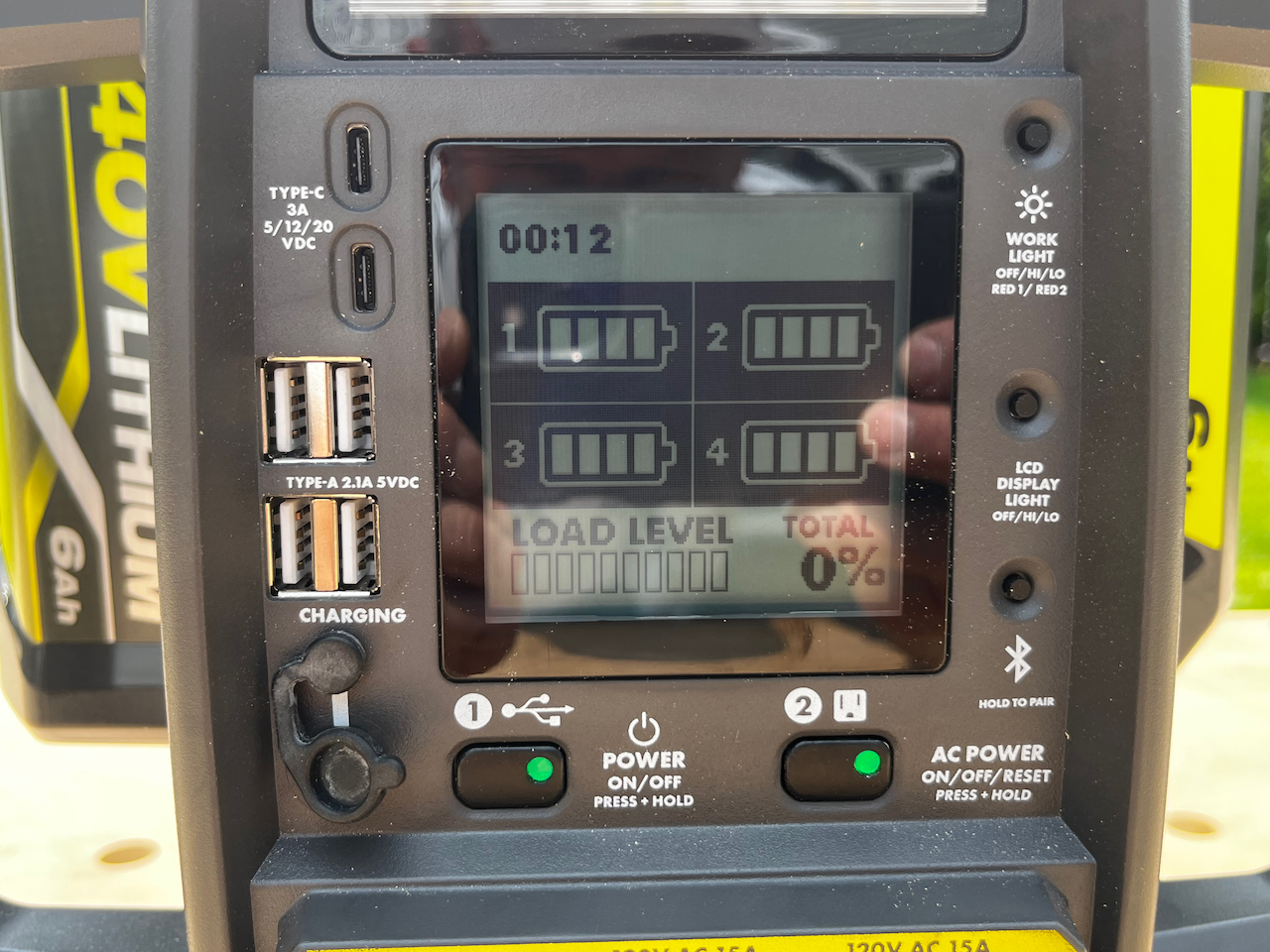



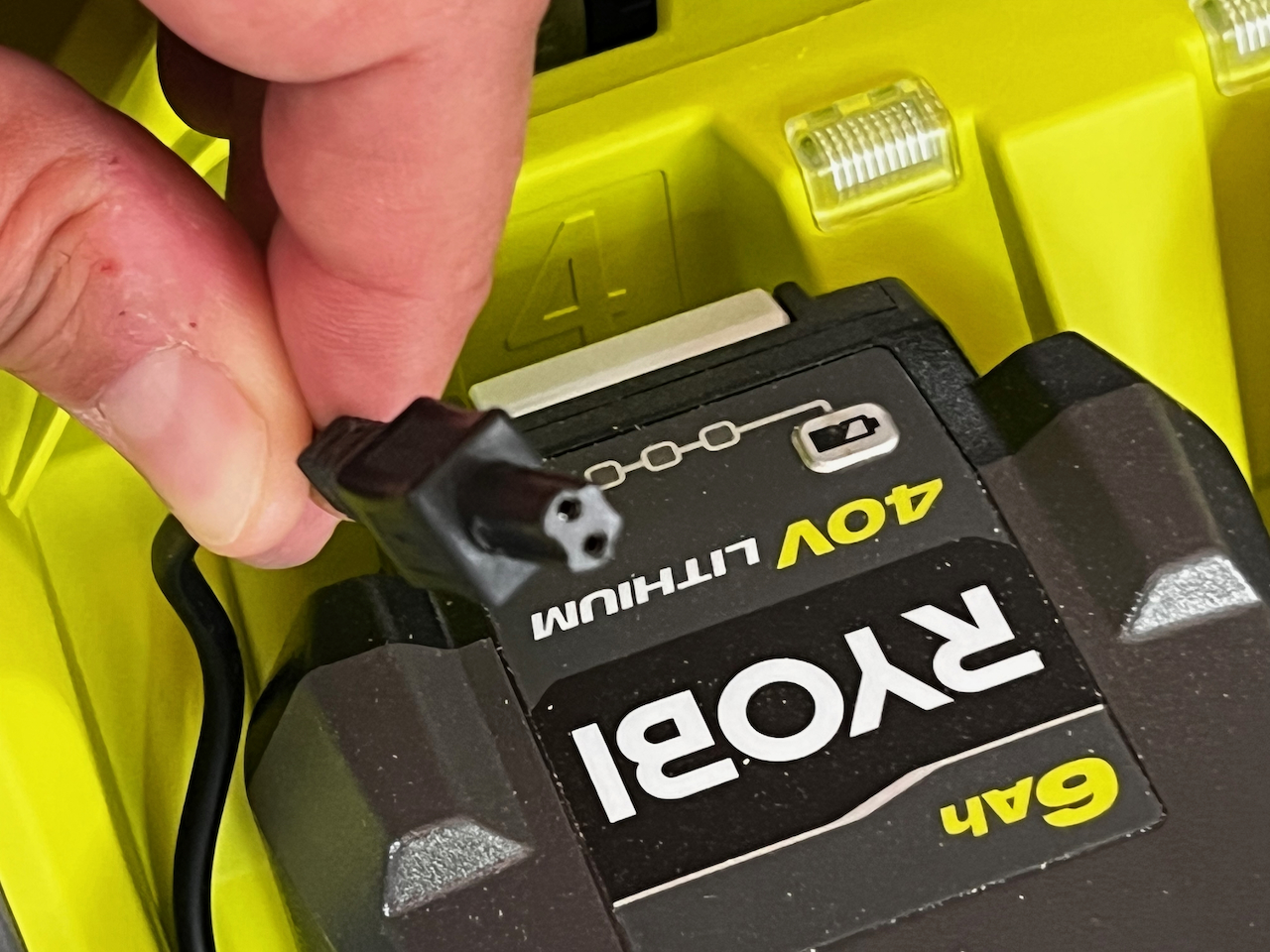












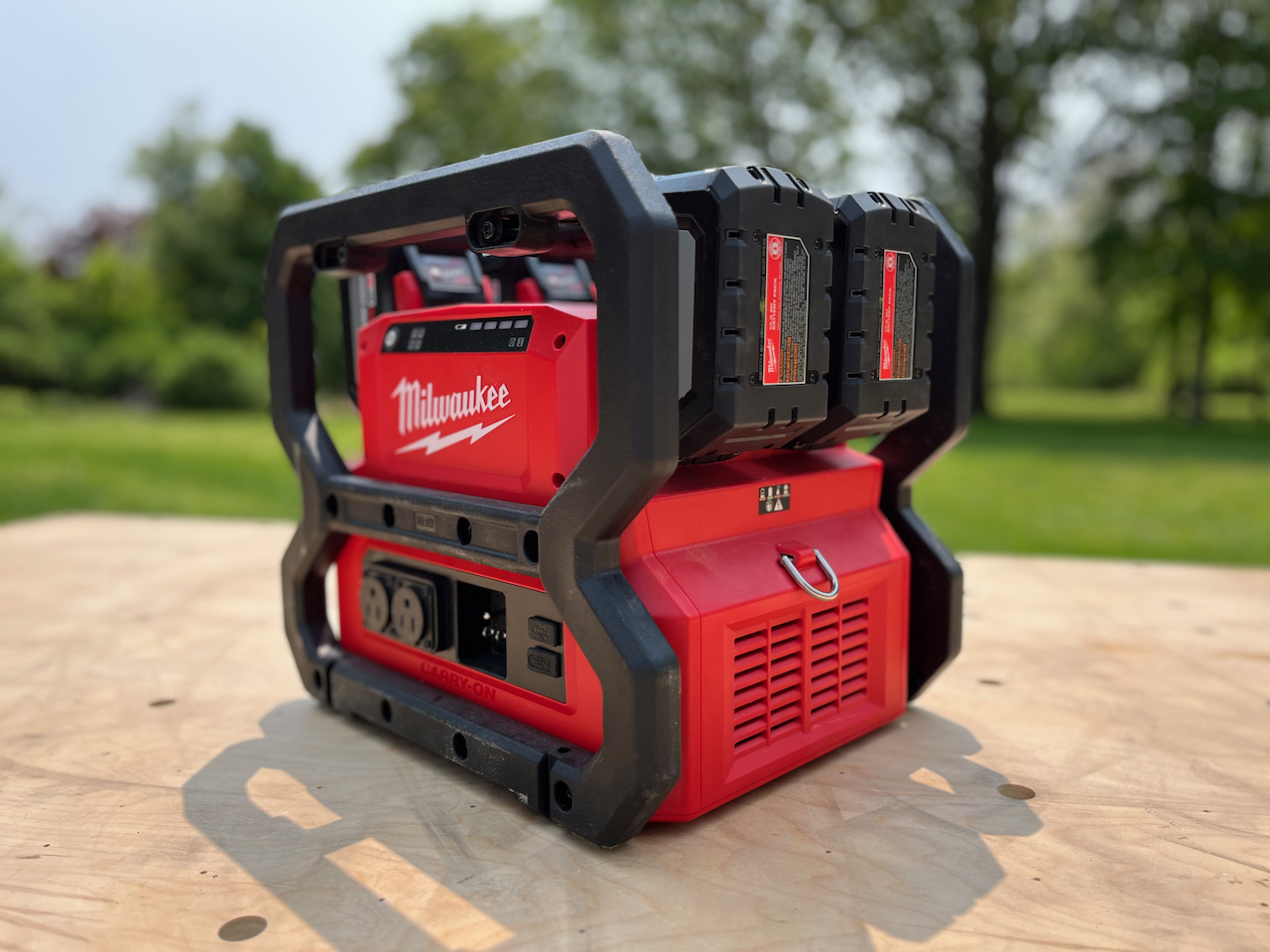






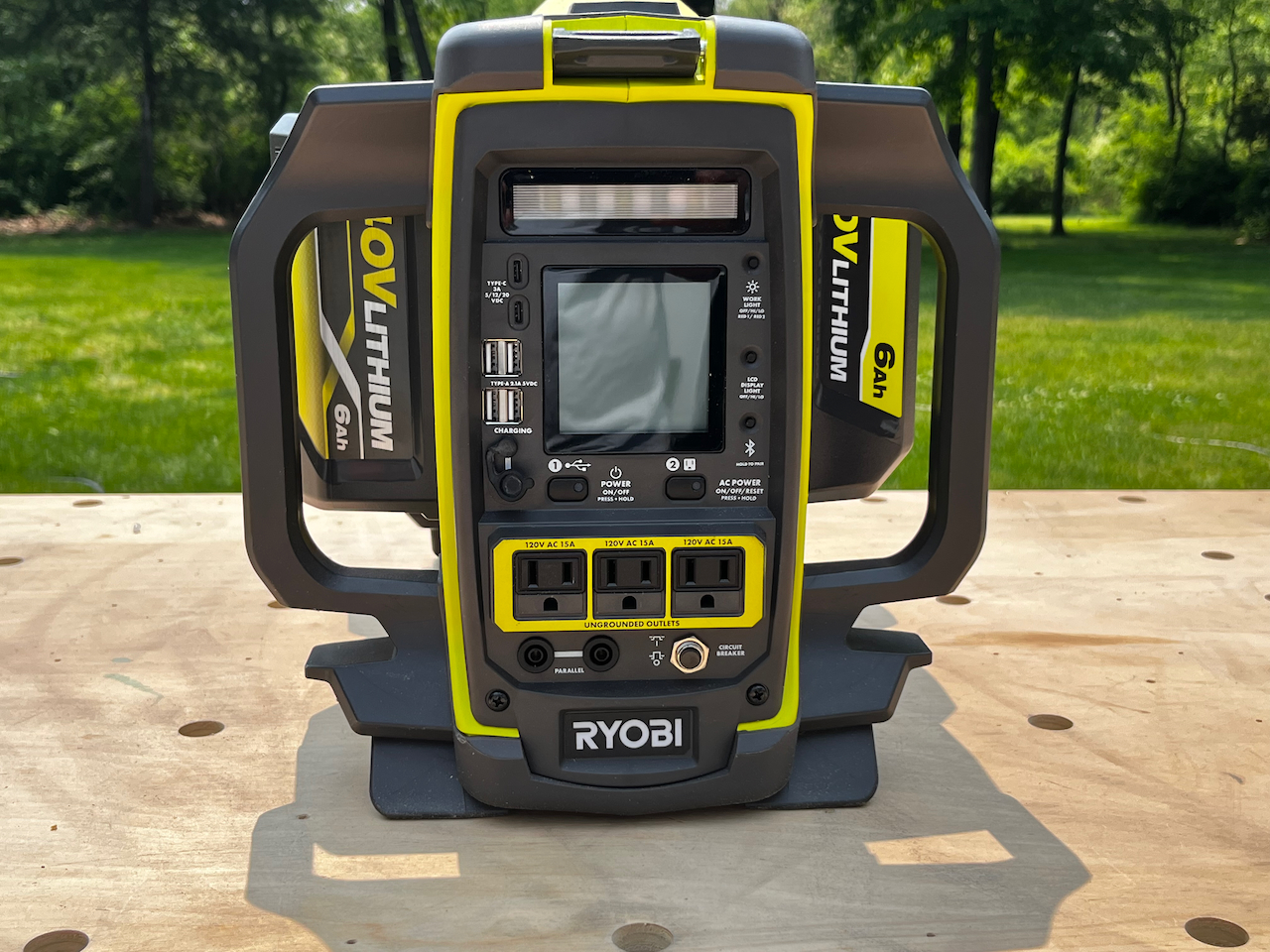













ryobi. has 12 amp batteries and can take 8 of them. You tested with 4 ) amp batteries ?
Bengt – This model can handle up to (4) packs at a time. We tested it with (4) 6 Ah packs. At the time of the testing that is what Ryobi sent us.